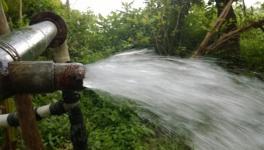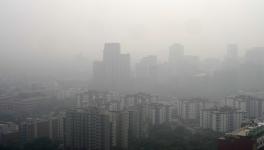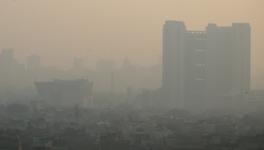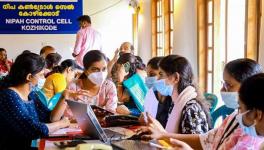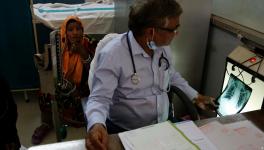Particulate Matter Can Contribute to Increase in Anaemia Among Women of Reproductive Age in India
Representational use only.
New Delhi: India is amongst the countries having the highest prevalence (about 53%) of anaemia in women of reproductive age (the age group 15-49 years). The prevalence of anaemia may increase with long-term exposure to Particulate Matter (PM) 2.5, a type of air pollutant. A recent study published in the journal Nature Sustainability showed that for an increase of 10 µg m−3(micrograms per cubic meter) of PM 2.5, the prevalence of anaemia increases by 7.23%. The µg m−3 signifies the concentration of an air pollutant in micrograms present per cubic meter of air. The study also says that among the PM species, sulfate and black carbons are usually more associated with anaemia in comparison to dust and organic carbon.
The World Health Organization (WHO) defines anaemia as a condition where the number of red blood cells or the haemoglobin concentration is lower than normal. This results in lesser availability of oxygen throughout the body.
Amongst the highest contributors to the PM, the study assessed that the industry shares the highest level. This is followed by other sectors like unorganised, domestic, agricultural waste, road dust, power and transport sector. The researchers claim that if India can meet the clean air targets then the prevalence of anaemia among women of reproductive age will come down to 39.5% from 53.1% in 186 districts.
The study found that rural areas have a higher prevalence of anaemia in comparison to urban areas and the prevalence across Indian districts was 53.1%. The burden of anaemia have also been found to be varied substantially among different states, for example, 22.6% in Nagaland and 64.4% in Jharkhand.
Previous studies already showed that exposure to particulate matter is linked with anaemia, that too in developed countries. The new study examined whether the same link is also present in India. The scientists estimated the long-term exposure to particulate matter including black carbon, organic carbon, sulfate, soil dust and sea salt. They used satellite-based data spanning a period of about 10 years.
The researchers opine that long-term exposure to particulate matter or fine particles,( which is in abundance in India, in fact, its concentration exceeds the permissible limit set by WHO) triggers inflammation through oxidative stress. Oxidative stress in the language of medical science denotes the imbalance of free radicals and antioxidants in the body. This can trigger cell and tissue damage. Free radicals are charged molecules that can cause a series of chemical reactions owing to their high reactivity, which can be harmful. The antioxidants neutralise the free radicals. Oxidative stress also triggers an inflammatory response. The inflammatory response is linked with the function of the immune system (defence mechanism of the body), which acts to clear off any outside objects that invade our body, be it a virus, a bacterium, fungi or even pollutants.
The oxidative stress caused by the particulate matter, present overwhelming in Indian air, impairs the process of iron transport and absorption within the body. This in turn reduces the amount of iron available for haemoglobin and finally leads to anaemia. Iron is a crucial part of haemoglobin and the deficiency of iron is the reason for over half of the anaemia cases worldwide.
The study was carried out by a large team of researchers collaborating from various international institutes including Tsinghua University, China, Health Effects Institute, USA, Indian Institute of Technology (IIT) Delhi, IIT Bombay, The Energy and Resources Institute (TERI) Delhi and St. Johns Medical College, Bengaluru.
Get the latest reports & analysis with people's perspective on Protests, movements & deep analytical videos, discussions of the current affairs in your Telegram app. Subscribe to NewsClick's Telegram channel & get Real-Time updates on stories, as they get published on our website.










